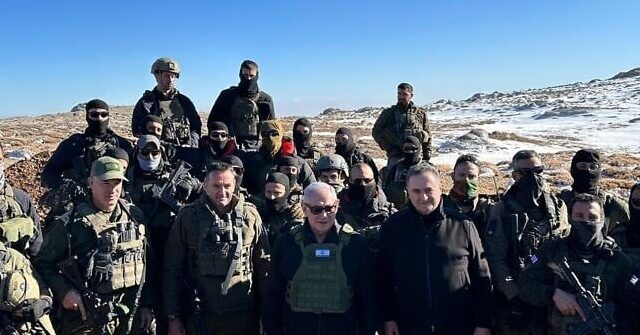On December 17, 2024, Israeli Prime Minister Benjamin Netanyahu visited troops from the Israel Defense Forces (IDF) stationed at Mount Hermon, a strategically important location that formerly housed a Syrian army post. The visit marked Netanyahu’s first time on the peak in 53 years, a place he reminisced about in a video shared from the summit, recalling his experience with Israeli special forces. During his assessment with top defense officials, Netanyahu emphasized the need to secure Israeli interests in the region, stating, “We will determine the best arrangement that will guarantee our security.” This visit comes amid ongoing tensions and border security challenges in the Golan Heights and along the Israel-Syria frontier.
Israel has maintained a military presence on the slopes of Mount Hermon for years, while Syrian forces previously occupied the summit itself. The border in this region is uniquely challenging as it traverses mountainous terrain that remains unfenced, contributing to concerns over cross-border infiltration. In response to these security threats, the IDF established an Alpine Brigade earlier in 2024, specifically tasked with addressing potential incursions across Mount Hermon and the adjacent Har Dov. The recent seizure of the peak followed the abandonment of the Syrian position by its military, which has been weakened by the ongoing civil war and the decline of the Assad regime’s control.
In a recent statement issued by Netanyahu’s office, it was announced that the Prime Minister had convened an assessment meeting with senior military officials, including the Defense Minister and the IDF Chief-of-Staff. The focus of the meeting was to review their operational posture in the region and set future strategic guidelines. Israel’s claim to maintain military presence in the area stems from its longstanding concern over the security threats posed by weapons transfers to Hezbollah in Lebanon via Syrian territories. This has positioned Israel’s military strategy as aligned with a broader objective of preventing hostile forces from taking hold within striking distance of its borders.
While Netanyahu’s government has expressed a desire for peaceful relations with neighboring Syria, it maintains a staunch position on addressing any potential dangers that could arise from Syrian military assets and chemical weapons. The ongoing conflict in Syria and the resultant instability have made the demarcation of military engagement increasingly complex. Syrian rebel leader Ahmed al-Sharaa stated that while he does not intend to use Syrian territory to launch attacks on Israel, he still insists on Israel’s withdrawal from areas it has occupied, including the recently captured Syrian territory within the demilitarized zone established by the 1974 armistice agreement.
The armistice agreement sought to establish a clear boundary and demilitarized zones to prevent conflict between Israel and Syria; however, Israel’s actions since last week—expanding its military presence beyond the agreed-upon demilitarized zones—have caused friction. Following the seizure of Mount Hermon, the dynamics of Israeli-Syrian relations remain precarious, with tensions potentially exacerbated by Israel’s insistence on maintaining military control for national security reasons. This ongoing military engagement underscores a broader trend of Israel reacting assertively to perceived threats from a deteriorating Syrian state.
As regional dynamics continue to evolve, the implications of Israel’s actions on the broader geopolitical landscape remain significant. Netanyahu’s visit to Mount Hermon is not only a reflection of current military strategies but also a symbol of Israel’s enduring commitment to asserting its interests in a region fraught with instability. The challenge for Israel will be balancing its security imperatives with the overarching goal of peace and stability, as it navigates the complexities of Syrian politics and the realities on the ground. The situation remains fluid, and the potential for conflict may linger as both sides stake their claims over contested territories.

